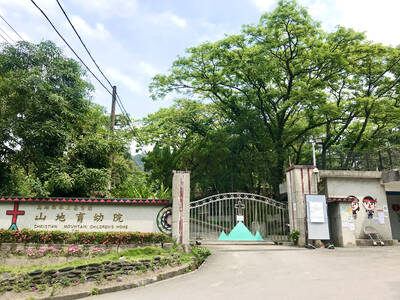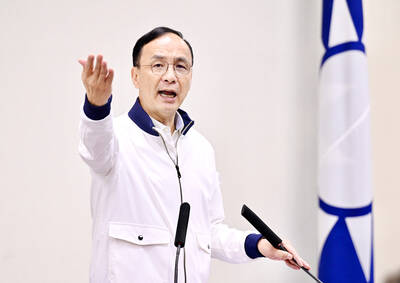A tour for chocolate lovers in Brooklyn, New York, isn’t just about tasting the final product. It also gives a peek at factories, neighborhoods and even business plans.
The chocolate tour offered by A Slice of Brooklyn takes visitors to four chocolate-makers around Brooklyn. “I love chocolate,” said Christine Dietz of San Diego, who was treated to the tour by friends throwing her a bachelorette party in New York. “But it’s really cool that we also get a bit of a tour of the city.”
But A Slice of Brooklyn’s chocolate tour is also part of a bigger trend. Confectioners and tour companies around the country are offering chocolate tours catering not just to the public’s sweet tooth, but also to consumer interest in learning where the products they eat and drink come from.

Photo: AP
EDUCATING CONSUMERS
“Customers care about what they put in their mouths — especially millennials and GenXers,’’ said Pam Williams, founder of the online academy Ecole Chocolat School of Professional Chocolate Arts. “They want to know where their food comes from and how it is processed.”
And while everybody knows that wine comes from grapes, “very, very few actually understand that chocolate comes from the seeds of a tree,” said Williams, who is also co-founder of the Fine Chocolate Industry Association. Inviting customers “into the factory to see the beans and the machinery that turn those beans into chocolate is a very good way to educate consumers on fine chocolate.”
FROM HERSHEY’S TO HIPSTERS
The granddaddy of US chocolate tours is Hershey’s Chocolate World in Hershey, Pennsylvania. It’s hosted more than 100 million guests since opening in 1973. The free tour takes guests on rides following chocolate from bean to bar, with treats and singing cows along the way.
But chocolate tours are offered in many other destinations around the country, from factories to visits with artisanal chocolatiers. Just be sure to plan ahead, as some tours are offered only on certain days and times and some require reservations. Some are free, but others are pricey. The Brooklyn tour is US$50.
Mars Chocolate (makers of M&Ms, Snickers and Dove) offers tours and tastings of its Ethel M premium chocolate brand at the Ethel M factory in Henderson, Nevada, near the Las Vegas strip.
Theo Chocolate welcomes more than 50,000 visitors a year to its Seattle factory . The tour shows how the brand sources organic fair-trade beans, right through the bar-making process.
In Oregon, Portland Walking Tours’ Chocolate Decadence tour visits multiple chocolatiers for tastings in every form: whipped, melted, liquid, beans, bars and more.
Lake Champlain Chocolates offers free factory tours and tastings in Burlington, Vermont.
In Somerville, Massachusetts, Taza Chocolate offers an Intro to Stone Ground Chocolate factory tour , and for children under 10, a Chocolate Story Time weekend mornings.
In Connecticut, you can even take a train from Thomaston to experience Fascia’s Chocolate Factory tours in Waterbury, with wine and chocolate pairings along the way.
Even in New York, A Slice of Brooklyn only skims the cream off the city’s chocolate offerings. Consider tours at Mast Brothers in Williamsburg , Brooklyn; the soon-to-open Harlem Chocolate Factory ; and the 5,000-square-foot Jacques Torres Chocolate Museum in Manhattan.
SLICE OF BROOKLYN TOUR
First stop on A Slice of Brooklyn’s chocolate tours is Jacques Torres’ shop in DUMBO, an industrial district turned chic enclave between the Brooklyn and Manhattan bridges. Next, at The Chocolate Room in the Cobble Hill neighborhood, owners Jon Payson and Naomi Josepher explain that they opened the business because they loved going out for dessert but had limited options for sit-down, restaurant-style dessert-only experiences.
In Red Hook, a working-class waterfront area of modest homes and warehouses, the tour strolls to a pier with a view of the Statue of Liberty before hitting Raaka Chocolate to see how the company’s artisanal bars are made, from processing cacao pods to wrapping bars. Flavors include smoked chai and pink sea salt. Last stop: Li-Lac Chocolates in Industry City, a revived business complex in the Sunset Park neighborhood. Li-Lac has been selling chocolates since 1923 and is known for creamy, old-school recipes, but only recently relocated to the Brooklyn site.
And for those who love the idea of touring Brooklyn, A Slice of Brooklyn also offers pizza tours and Christmas lights tours.

May 18 to May 24 Pastor Yang Hsu’s (楊煦) congregation was shocked upon seeing the land he chose to build his orphanage. It was surrounded by mountains on three sides, and the only way to access it was to cross a river by foot. The soil was poor due to runoff, and large rocks strewn across the plot prevented much from growing. In addition, there was no running water or electricity. But it was all Yang could afford. He and his Indigenous Atayal wife Lin Feng-ying (林鳳英) had already been caring for 24 orphans in their home, and they were in

On May 2, Chinese Nationalist Party (KMT) Chairman Eric Chu (朱立倫), at a meeting in support of Taipei city councilors at party headquarters, compared President William Lai (賴清德) to Hitler. Chu claimed that unlike any other democracy worldwide in history, no other leader was rooting out opposing parties like Lai and the Democratic Progressive Party (DPP). That his statements are wildly inaccurate was not the point. It was a rallying cry, not a history lesson. This was intentional to provoke the international diplomatic community into a response, which was promptly provided. Both the German and Israeli offices issued statements on Facebook

Even by the standards of Ukraine’s International Legion, which comprises volunteers from over 55 countries, Han has an unusual backstory. Born in Taichung, he grew up in Costa Rica — then one of Taiwan’s diplomatic allies — where a relative worked for the embassy. After attending an American international high school in San Jose, Costa Rica’s capital, Han — who prefers to use only his given name for OPSEC (operations security) reasons — moved to the US in his teens. He attended Penn State University before returning to Taiwan to work in the semiconductor industry in Kaohsiung, where he

Australia’s ABC last week published a piece on the recall campaign. The article emphasized the divisions in Taiwanese society and blamed the recall for worsening them. It quotes a supporter of the Taiwan People’s Party (TPP) as saying “I’m 43 years old, born and raised here, and I’ve never seen the country this divided in my entire life.” Apparently, as an adult, she slept through the post-election violence in 2000 and 2004 by the Chinese Nationalist Party (KMT), the veiled coup threats by the military when Chen Shui-bian (陳水扁) became president, the 2006 Red Shirt protests against him ginned up by